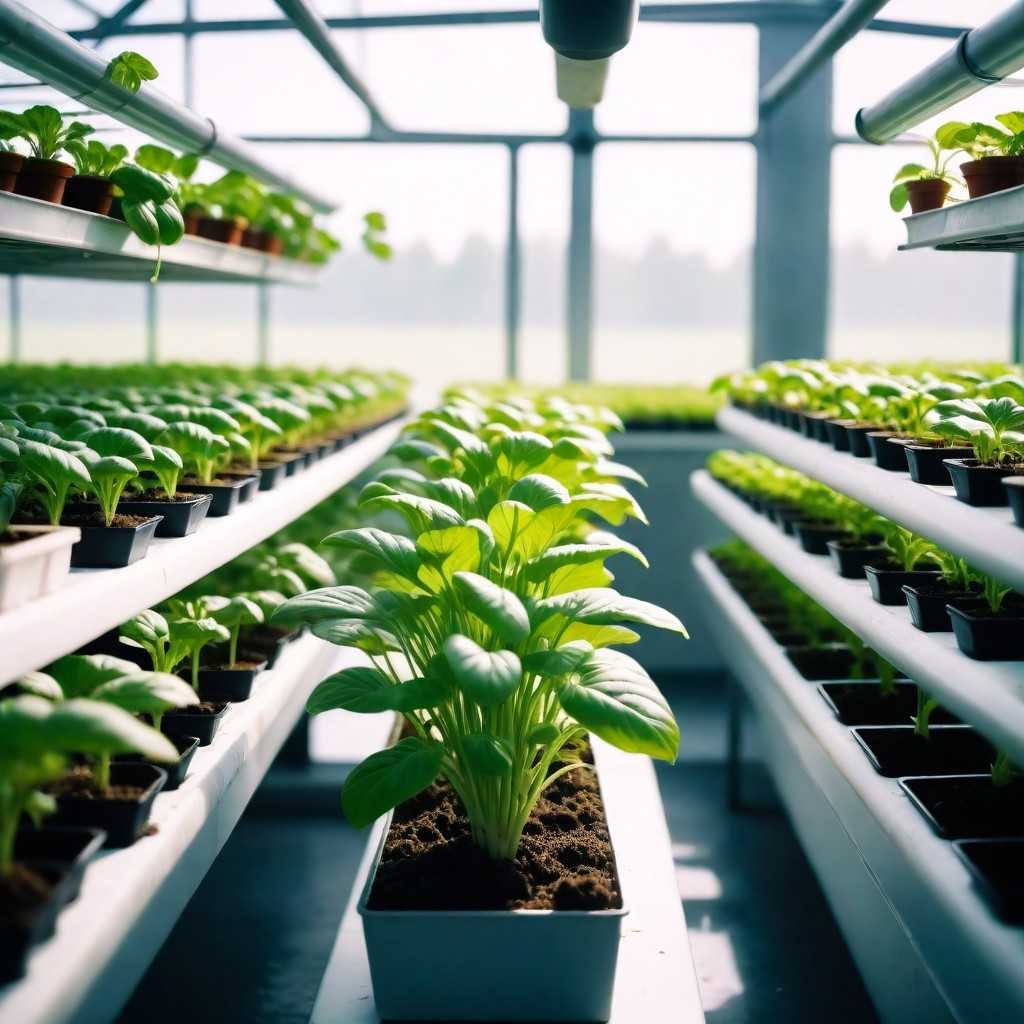Hydroponic Farming at Home: Beginner's Guide to Hydroponic Farming
- by: news desk
- 18 April, 2024

In recent years, the concept of hydroponic farming has captured the imagination of many gardening enthusiasts and environmentalists alike. This innovative method of growing plants without soil is not only efficient but also offers a sustainable solution to traditional farming challenges. In this guide, we'll delve into the world of hydroponic farming for beginners, exploring how you can set up your own indoor hydroponic garden at home and embark on a journey of fresh, nutritious produce right from your living space.
Understanding Hydroponic Farming
Hydroponic farming involves growing plants in a nutrient-rich water solution, without the use of soil. Instead of soil, plants receive essential nutrients directly through water, providing them with everything they need for healthy growth. This method offers several advantages over traditional soil-based farming, including faster growth rates, higher yields, and the ability to grow plants in limited spaces.
Getting Started with Hydroponic Farming
1. Choose Your Setup
There are various hydroponic systems to choose from, each catering to different needs and preferences. Some popular options for beginners include:
- Deep Water Culture (DWC): Plants are suspended in a nutrient solution, with their roots submerged in water.
- Nutrient Film Technique (NFT): A thin film of nutrient solution continuously flows over the plant roots.
- Ebb and Flow: This system periodically floods the plant roots with nutrient solution before draining it away.
- Aeroponics: Roots are suspended in the air and misted with a nutrient solution.
Research each system to determine which one aligns best with your space, budget, and gardening goals.
2. Gather Essential Equipment
Regardless of the system you choose, you'll need some basic equipment to get started:
- Growing Containers: These can be trays, buckets, or any other waterproof containers suitable for holding plants and water.
- Nutrient Solution: Purchase a pre-formulated hydroponic nutrient solution or mix your own according to plant requirements.
- Growing Medium: While not necessary for all hydroponic systems, some, like DWC, may require a growing medium such as clay pebbles or perlite to support plant roots.
- Light Source: If you're setting up an indoor hydroponic garden, invest in grow lights to provide plants with the necessary light for photosynthesis.
- pH and EC Meters: These tools are essential for monitoring and adjusting the pH and electrical conductivity (EC) of your nutrient solution.
3. Select Your Plants
One of the beauties of hydroponic farming is its versatility. You can grow a wide variety of plants using this method, including herbs, leafy greens, tomatoes, and even strawberries. Choose plants that are well-suited to hydroponic conditions and match your preferences.
Setting Up Your Indoor Hydroponic Garden
Now that you've gathered your equipment and chosen your plants, it's time to set up your indoor hydroponic garden:
1. Choose a Location
Select a suitable location for your hydroponic system. Ensure it has access to adequate light, whether natural or artificial, and consider factors like temperature and humidity levels.
2. Assemble Your System
Follow the instructions provided with your chosen hydroponic system to assemble it correctly. Pay attention to details such as water levels, nutrient concentrations, and aeration to ensure optimal plant growth.
3. Plant Your Seeds or Seedlings
Once your system is set up, it's time to plant your seeds or seedlings. Be gentle when handling delicate roots and ensure they are adequately submerged or supported by the growing medium.
4. Monitor and Maintain
Regularly monitor your hydroponic system to ensure everything is functioning correctly. Keep an eye on pH and EC levels, adjusting them as necessary to maintain optimal conditions for plant growth. Additionally, check for signs of pests or nutrient deficiencies and address them promptly.
Tips for Success
- Start Small: If you're new to hydroponic farming, start with a small-scale system to gain experience before expanding.
- Research: Take the time to learn about the specific needs of the plants you're growing, including their nutrient requirements and ideal growing conditions.
- Experiment: Don't be afraid to experiment with different plant varieties and hydroponic setups to find what works best for you.
- Stay Consistent: Consistency is key to success in hydroponic farming. Stick to a regular maintenance schedule and provide your plants with the care they need to thrive.
Benefits of Hydroponic Farming
Hydroponic farming offers numerous benefits for both growers and the environment:
- Water Efficiency: Hydroponic systems use significantly less water than traditional soil-based farming, making them ideal for regions prone to drought.
- Space Savings: With hydroponics, you can grow more plants in less space, making it perfect for urban environments or those with limited outdoor space.
- Year-Round Growing: Indoor hydroponic gardens allow you to grow fresh produce year-round, regardless of the season or climate outside.
- Reduced Environmental Impact: By eliminating the need for soil and reducing water usage, hydroponic farming can help minimize environmental degradation associated with traditional agriculture.
Conclusion
Hydroponic farming offers an exciting opportunity for beginners to explore sustainable and efficient gardening practices right from the comfort of their own homes. By following the steps outlined in this guide and experimenting with different setups and plant varieties, you can embark on a rewarding journey of growing fresh, nutritious produce year-round. Whether you're a seasoned gardener looking to try something new or a complete beginner eager to green up your space, hydroponic farming holds endless possibilities for growth and discovery.
TVL News
हमारे फेसबुक पेज को लाइक करें : https://www.facebook.com/TVLNews
चैनल सब्सक्राइब करें : https://www.youtube.com/TheViralLines
हमें ट्विटर पर फॉलो करें: https://twitter.com/theViralLines
ईमेल : thevirallines@gmail.com










